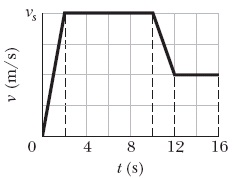Assignment:
Q1: Because Earth's rotation is gradually slowing, the length of each day increases: The day at the end of 1.0 century is 1.0 ms longer than the day at the start of the century. In 91 centuries, what is the total of the daily increases in time (that is, the sum of the gain on the first day, the gain on the second day, etc.)?
Q2: Gold, which has a density of 19.32 g/cm3, is the most ductile metal and can be pressed into a thin leaf or drawn out into a long fiber. (a) If a sample of gold with a mass of 3.261 g, is pressed into a leaf of 4.019 μm thickness, what is the area of the leaf? (b) If, instead, the gold is drawn out into a cylindrical fiber of radius 2.400 μm, what is the length of the fiber?
Q3: Grains of fine California beach sand are approximately spheres with an average radius of 50 μm and are made of silicon dioxide, which has a density of 2.8 × 103kg/m3. What mass of sand grains would have a total surface area (the total area of all the individual spheres) equal to the surface area of a cube 1.1 m on an edge?
Q4 :One cubic centimeter of a cumulus contains 330 water drops, which have a typical radius of 10 μm. (a) How many cubic meters of water are in a cylindrical cumulus cloud of height 3.2 km and radius 0.9 km? (b) How many 1-liter pop bottles would that water fill? (c) Water has a density of 1000 kg/m3. How much mass does the water in the cloud have?
Q5: You are to fix dinners for 400 people at a convention of Mexican food fans. Your recipe calls for 3 peppers per serving (one serving per person). However, you have only habanero peppers on hand. The spiciness of peppers is measured in terms of the scoville heat unit (SHU). On average, one pepper has a spiciness of 4000 SHU and one habanero pepper has a spiciness of 300000 SHU. To get the desired spiciness, how many habanero peppers should you substitute for the peppers in the recipe for the 400 dinners?
Q6: From t = 0 to t = 4.07 min, a man stands still, and from t = 4.07 min to t = 8.14 min, he walks briskly in a straight line at a constant speed of 2.47 m/s. What are(a) his average velocity vavg and (b) his average acceleration aavg in the time interval 1.00 min to 5.07 min? What are (c) vavg and (d) aavg in the time interval2.00 min to 6.07 min?
Q7: A ball of moist clay falls 19.2 m to the ground. It is in contact with the ground for 22.0 ms before stopping. (a) What is the average acceleration of the ball during the time it is in contact with the ground? (Treat the ball as a particle.) (b) Is the average acceleration up or down?
Q8: The Zero Gravity Research Facility at the NASA Glenn Reseach Center includes a 138 m drop tower. This is an evacuated vertical tower through which, among other possibilities, a 1 m diameter sphere containing an experimental package can be dropped. (a) How long is the sphere in free fall? (b) What is its speed just as it reaches a catching device at the bottom of the tower? (c) When caught, the sphere experiences an average deceleration of 35.0g as its speed is reduced to zero. Through what distance does it travel during the deceleration?
Q9: A pilot flies horizontally at 620 km/h, at height h = 31 m above initially level ground. However, at time t = 0, the pilot begins to fly over ground sloping upward at angle 0 = 4.3° (see the figure). If the pilot does not change the airplane's heading, at what time t does the plane strike the ground?

Q10: How far does the runner whose velocity-time graph is shown in the figure travel in 16 s? The figure's vertical scaling is set by vs = 11.0 m/s.
